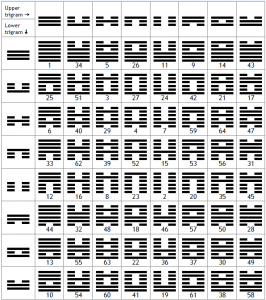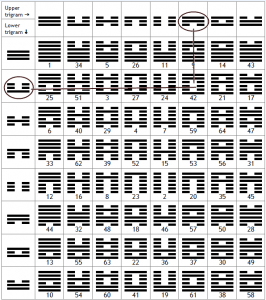Your copy of the I Ching should include a reference chart that looks something like this:
You can use this to find the number of your hexagram by separating it into two groups of three lines – the trigrams. So if you had these six lines…
…you’d divide them into

above

And you’d find those on the chart and use them to identify your hexagram, like this:
Then you turn to this hexagram in your book and read your answer. If any of the lines are changing, you look up the first hexagram in just the same way. Then your answer includes the special text for those lines, and also the hexagram revealed when they are all changed.
Look up the changed hexagram – the ‘relating hexagram’ – in the same way.
Hexagram shorthand
There’s a convenient ‘shorthand’ you can use to tell someone else your reading – one we often use in the I Ching Community. (I think it originated with Bradford Hatcher.) You simply write the numbers of the hexagrams and lines that are changing. So for instance, this reading –
– would be written 42.2.5 to 41. This works better than using the hexagram names, because those are translated differently in different books.











